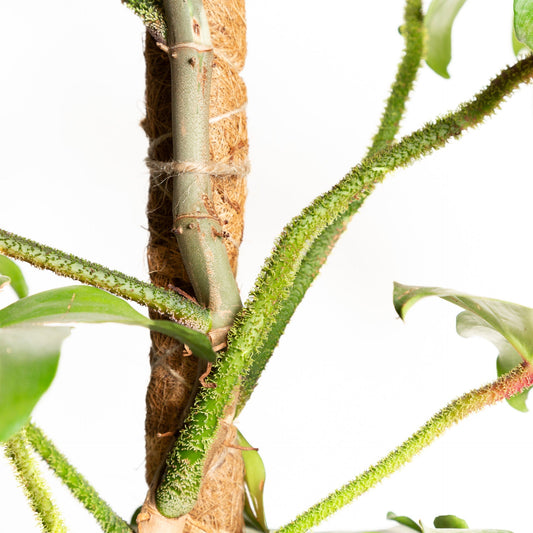Terrariums are everyone’s favorite! You get a cool piece of glass and put some living things inside and suddenly there’s a thriving ecosystem that’s oh-so-easy to fall in love with. No one wants to see that diminish, so here’s a walkthrough on terrarium maintenance so you can keep yours happy and thriving.
Closed terrariums are famous for not needing much care, but beginners generally stick to open terrariums - and those do need some care, even if it isn’t much. It needs a little more care in the beginning of its life, but the longer your open terrarium has to establish itself, the easier it becomes to care for it.
If your terrarium is composed of succulents, you may find that it’s a little temperamental. Terrariums are high-humidity environments and don’t generally have drainage holes, both of which are things that succulent plants aren’t fond of.
Your main goal with such a terrarium should be to carefully monitor its moisture content to ensure that no water builds up in the bottom and that the tops of the succulents are not getting damp often, if ever. Water by carefully spraying the inside walls of the terrarium and allowing the water to flow down into the soil until it’s just damp enough to stick to the sides of the terrarium.
This type of terrarium will fare much better if you’re able to give it a good amount of sunlight - besides being high-light plants in general, the succulents will also benefit greatly from the added assistance in evaporating excess moisture.
Terrariums that do not have succulents are generally much easier as the foliage plants that thrive in terrariums are usually lovers of humidity and damp soil. Depending on what specific varieties of plant you have in your terrarium, it’s usually a good idea to keep it damp in there with a mister and check on the moisture of the soil once or twice a week to ensure that it doesn’t dry out. Foliage terrariums generally do best when placed in bright filtered light - direct sunlight might cook plants that live inside of glassware.
All that being said, here’s a handful of knowledge concerning maintenance that will carry you through your terrarium ownership learning curve to success!
If only one plant in either of these kinds of terrarium dies even though the rest of the plants are doing fine, it should be quickly removed. This is an indication that the other plants have essentially “rejected” this plant, whether by stealing its water or by growing roots that overtake it. You might catch it happening before that single plant dies, in which case it can usually be replanted elsewhere in the terrarium without issue.
In a terrarium ecosystem, the plants are kept small by keeping the nutrient layer (the soil) relatively shallow, thereby forcing the plants to work together to distribute nutrients to every plant. Because this layer is shallow, it will usually run out of nutrients after roughly a month - this is when we add bacterial inoculant to the soil in order to maintain its ability to give food to the plants. Terrariums that do not follow this step will yellow and pale over time.
Insects, fungus, and mold are normal variables in every type of home. Spores float through the air when you open the door, bugs come in a dozen different ways, etc. It’s all just part of life on Earth. If you notice any of these things start to populate your terrarium, it might not even be because you necessarily did anything wrong (though the usual culprit tends to be overwatering). Just apply a 1:1 mix of hydrogen peroxide and water (up to 3 times) to kill off the most common of these and troubleshoot with us further if anything remains. At most, you might need to apply what you can think of as plant medicine which we’ll happily guide you in applying.
Any time you cut something off of a plant in your terrarium, make sure you’re using a very sharp pair of scissors that’s clean and sanitary. Plants can get infections too! It’s often better to buy specialized plant scissors, which you can find in our Plant Essentials section.
Terrarium care isn’t difficult by any stretch, and the times where you’ll have to troubleshoot are few and far between. Once it’s happily placed in your home, the only thing you’ll generally have to concern yourself with is watering it occasionally and cleaning the glass if it gets dirty! Just message us if you have any problems or questions and leave the learning curve to us so you can focus on just enjoying your terrarium.
If you’re in need of some tools for maintaining your terrarium, we’ve put together a collection! Check it out at: Terrarium Tools



